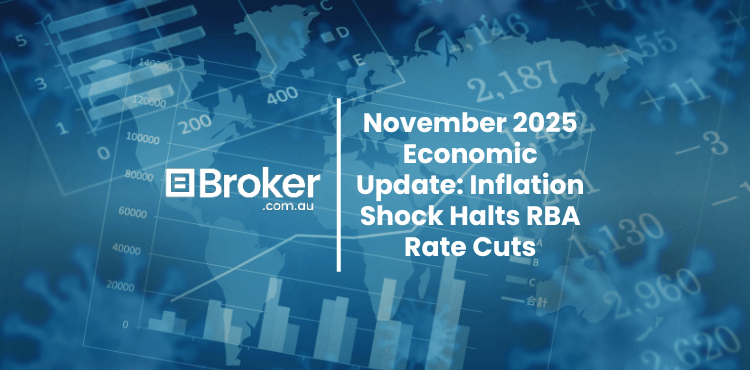Private credit has grown from a niche alternative to a core part of Australia’s lending landscape. In the space of just a few years, it has shifted from being a secondary option for non-bank borrowers to a sector worth tens of billions of dollars, attracting attention from investors, fund managers, and now regulators.
That regulatory attention sharpened in recent weeks with the release of ASIC’s REP 814, a discussion paper that examines the state of the private credit industry, alongside a series of
high-profile stop orders targeting specific funds. The timing is no accident: rapid growth, higher yields, and increasing retail investor participation have brought the market into the spotlight.
If you’re exploring private credit opportunities, you can start your application here.
While the report does not impose new rules, it signals a clear intent — the sector must demonstrate transparency, maturity, and better governance, or it risks heavier regulatory intervention. For investors and advisers, the message is just as important: private credit may offer attractive returns, but it carries risks that must be properly understood.
The Rise of Private Credit in Australia
Private credit — broadly defined as lending by non-bank institutions — has surged over the past decade. Its growth has been fuelled by two parallel forces:
1. Borrower demand: As banks pulled back from certain types of lending, particularly property development and SME finance, private credit stepped into the gap. Borrowers needing speed, flexibility, or loans that didn’t fit neatly within bank credit policies increasingly turned to private lenders.
2. Investor appetite: In a world of low interest rates and volatile share markets, investors hunted for income and stability. Private credit promised diversification, steady yields, and in many cases, security over real assets.
Today, Australia’s private credit sector spans a wide range of lending products:
· Residential and commercial property-backed loans
· Construction and development finance
· Corporate and SME lending
· Agricultural and rural loans
· Specialist and bespoke debt structures
This diversity is both the sector’s strength and its regulatory challenge. The risks vary dramatically depending on the type of loan, security, and borrower.
Why ASIC’s Findings Weren’t a Surprise
For industry insiders, ASIC’s report is not news — it is confirmation. Many of the risks identified in REP 814 have been well understood for years by experienced managers and advisers.
In fact, much of the regulator’s analysis echoes long-standing concerns:
· Over-reliance on construction finance
· Lack of independent oversight
· Inconsistent disclosure around valuations and portfolio composition
· Misleading use of terms such as “senior secured”
The difference now is that the regulator is putting these issues on the record. This elevates the discussion and signals that ASIC will intervene more forcefully if standards do not improve.
Key Issues Raised by ASIC
REP 814 highlights several systemic risks and structural weaknesses. Investors and advisers should pay close attention to the following:
1. Fees and Remuneration
Borrower-paid fees can create misaligned incentives, where managers are motivated to lend aggressively rather than prudently. Net margins are often unclear, leaving investors unsure of the true costs.
2. Related-Party Transactions
ASIC raised concerns about managers lending to affiliates, holding both debt and equity in the same entity, or moving assets between funds. Without clear disclosure, these practices can compromise investor protections.
3. Valuations
Valuation methodologies across the sector lack consistency. Independence is not always guaranteed, and valuations are often infrequent, raising questions about whether portfolios are being reported accurately.
4. Conflicts of Interest
Conflicts exist in almost every fund, but transparency varies significantly. Investors need to know how conflicts are identified, managed, and reported.
5. Liquidity and Distributions
Some funds pay distributions out of capital, not income, without disclosure. Others lack formal liquidity frameworks, exposing investors to risks if redemptions rise.
6. Reporting Standards
Many funds provide only limited detail on loan performance, arrears, or portfolio concentration. This makes it difficult for investors to properly assess risk.
7. Terminology and Clarity
The misuse of terms like “senior secured” or “first mortgage” is a recurring problem. Investors may believe they are buying into conservative strategies, when in fact the underlying risks are far higher.
8. Concentration in Property Development
ASIC flagged construction and development lending as the single largest systemic risk. These loans are complex, cyclical, and often reliant on inexperienced investors.
9. Retail Investor Exposure
Retail investors are increasingly participating in private credit through managed funds and platforms. ASIC questions whether they truly understand the nature of the risks they are taking on.
Understanding Risk: Why Private Credit Is Different
A central lesson from REP 814 is that not all private credit is created equal. The phrase “secured lending” may suggest safety, but the reality depends entirely on the type of security and borrower profile.
· Second mortgages: Subordinated debt with higher yields, but a real risk of capital loss if the primary lender enforces.
· Construction loans: Vulnerable to market cycles, delays, and cost inflation. Collateral may be incomplete or of limited value.
· Agricultural lending: Exposed to commodity prices, weather events, and illiquidity.
· Specialised or bespoke debt: Often requires deep expertise and due diligence beyond the capacity of retail investors.
Unlike equities, where investors typically focus on upside potential, private credit requires a “downside-first” mindset. The key question is always: what happens if the borrower defaults?
The Adviser’s Dilemma
For financial advisers, private credit presents both opportunities and challenges. Many have deep expertise in equities and bonds but are less familiar with debt-based investing. Applying the same analytical frameworks can be dangerous.
Moreover, the accountability burden is heavier. If a share fund underperforms, the adviser can point to market conditions. If a private credit loan fails, responsibility often lands directly on the adviser’s choice of fund or manager.
This is why governance and transparency matter so much. Funds that employ independent trustees, external custody, and clear credit processes offer advisers greater protection and investors greater confidence.
Broker.com.au connects investors and businesses with transparent private credit solutions—apply today here.
Governance and Oversight: The Differentiators
The report makes it clear: in private credit, governance is everything. Strong managers distinguish themselves by:
· Having external trustees and custodians in place
· Using independent credit committees and non-executive boards
· Disclosing fees, conflicts, and portfolio details clearly
· Maintaining diversification and discipline in loan selection
· Avoiding over-concentration in speculative property finance
These measures not only protect investors but also build resilience in the market as a whole.
The Investor’s Checklist
For investors considering exposure to private credit, ASIC’s report provides a useful framework for due diligence. Key questions to ask include:
· Are the fee structures and margins fully transparent?
· What types of loans are being made, and what security supports them?
· How diversified is the portfolio across sectors and geographies?
· What percentage of the portfolio is tied to construction or second mortgages?
· How often are valuations conducted, and by whom?
· How are conflicts of interest disclosed and managed?
· Are arrears, defaults, and loan performance reported in detail?
· Can investors obtain see-through access to the loan book?
Asking these questions won’t eliminate risk, but it will ensure that investors make informed decisions.
Charts and Data Points to Include
To illustrate these dynamics, charts could be included showing:
1. Growth of private credit in Australia over the past decade (RBA / ABS data).
2. Market share by lending type (property, construction, SME, agriculture).
3. Investor breakdown (institutional vs retail participation).
4. Historical arrears/default rates in construction lending vs residential lending.
The Road Ahead: A Market in Transition
ASIC’s intervention should not be seen as a threat but as a milestone in the sector’s evolution. In global markets, private credit has matured into a well-established asset class. Australia is following the same trajectory, though it still lags in transparency and investor education.
The regulator’s role will be important, but ultimately it is investors who will shape the future. By demanding higher standards and rewarding managers with strong governance, investors can drive improvements across the industry.
Conclusion: Education and Discipline Will Define Success
Private credit offers genuine potential: attractive, risk-adjusted income with lower volatility than equities, and valuable diversification from mainstream asset classes. But the rewards only come to those who approach it with discipline and knowledge.
ASIC’s REP 814 is a wake-up call. It highlights the risks, warns against complacency, and challenges both managers and investors to lift standards.
For investors and advisers, the path forward is clear: ask sharper questions, demand better disclosure, and choose managers who take governance seriously. For the sector, this is not just about compliance – it’s about building long-term credibility.
Private credit in Australia is maturing fast. With transparency, governance, and investor education, it can grow into a cornerstone of the financial system. Without them, it risks falling short of its promise.
From my point of view, I think regulation is a good thing. We always want to be able to deliver not just a quality service, but also an industry that is doing the right thing. With so much opaqueness, there are too many opportunities for bad behaviour. Holding everyone accountable, lenders and brokers alike, should only be seen as a good thing, not a hinderance.
Ready to navigate Australia’s evolving private credit market with confidence? Apply now through our simple online form here.




